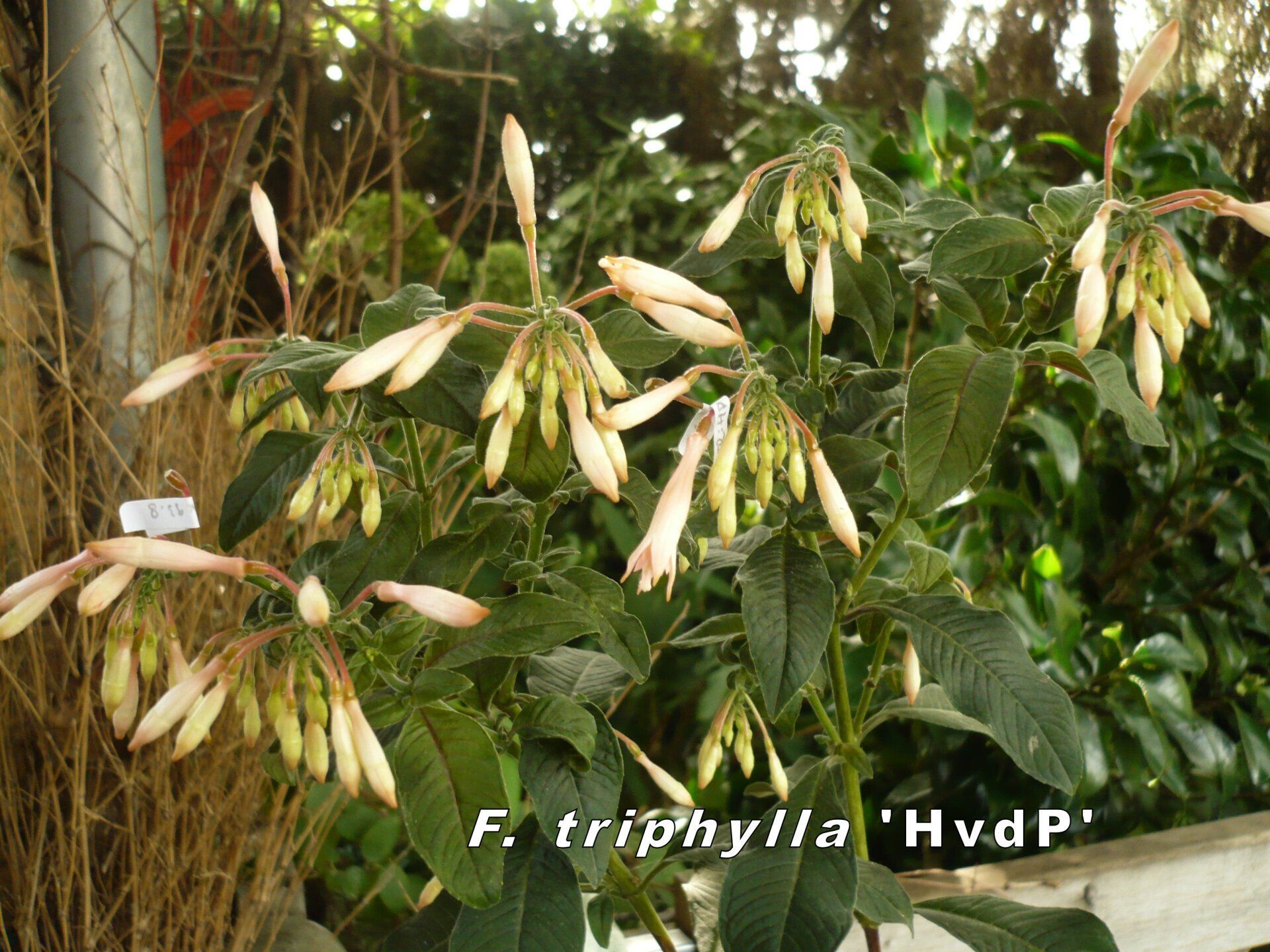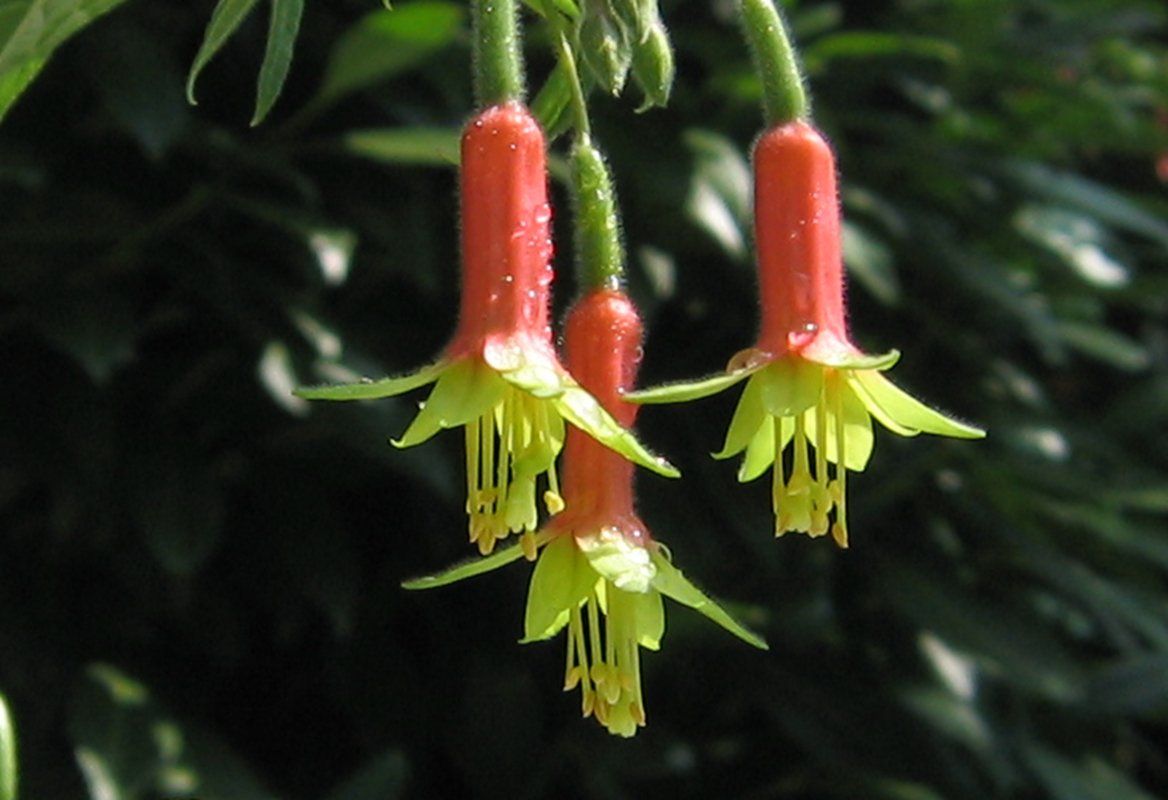The Purcellian Fuchsia triphylla series encompasses Fuchsia cultivars having a similar genome as the species F. triphylla.
The genome can be represented as a tetraploid TTTT, so a series of four sets of homologous F. triphylla chromosomes.
Each set of chromosomes of an euploid plant of the Purcellian Fuchsia triphylla series comprises (as is the case for any Fuchsia) 11 chromosomes.The blooms in this series can be white, pale pink or orange.
'Purcellian Elegancy' was the first to be introduced in 2015.
So far, two cultivars have been introduced; several others are still in the 'waiting room'.


Purcellian Elegancy
Fuchsia triphylla ‘Purcellian Elegancy’ (De Cooker, 2015) is the first pale pink F. triphylla to be released. It is a representative example of the first series of pale pink Fuchsias that has been produced in the programme ‘In search for the white Fuchsia triphylla’.
It originates from the crossing (F. triphylla ’HvdP’ x F. triphylla ‘PB7760 #7) x self. The pink F. triphylla seedlings show a broad morphological variation as to the colour of the flower and leaves, shape, growth and overwintering properties. This cultivar, as well as new introductions from the series, will all carry the prefix ‘Purcellian’, indicating that these cultivars are still F. triphylla species varieties.
The prefix is a tribute to the great British composer Henry Purcell, who has composed such wonderful music masterpieces.
‘Purcellian Elegancy’ has excellent fertility, both as the male and the female. It has good growth properties, but is less vigorous than its male predecessor F. triphylla ‘PB 7760#7’. If grown from autumn cuttings, without pinching, it will start flowering early July. The flowering period extends some 6-8 weeks, and will restart in the autumn. Depending on the point of time cuttings are taken, and by pinching, the flowering period can be elongated over a longer period, which is attractive for hybridization purposes.
Overwintering properties of specimens from the ‘Purcellian’ series cultivars may differ appreciably. It is therefore recommended providing overwintering conditions similar to several more tender Triphyllas, i.e., applying a not too low temperature, preferably some 8 degrC or higher in the winter season. As a kind of insurance, autumn cuttings could be overwintered at higher temperatures.

Purcellian Grace
Fuchsia triphylla ‘Purcellian Grace’ (De Cooker, 2020) originates from the crossing (F. triphylla ’HvdP’ x F. triphylla ‘PB7760 #7) x self. It stems from the same series of crossings in 2013 from which F. triphylla ‘Purcellian Elegancy’ (De Cooker, 2015) also originated. Although not being a true species, it still has the original F. triphylla species genome with a measured 2C nuclear DNA content = 4.05 pg.
Differentiation from ‘Purcellian Elegancy’ consists primarily of somewhat differently shaped and whiter flowers, somewhat different foliage and superior winter storage at low temperature of about 5 dgrC.
‘Purcellian Grace’ is able producing flowers all year round, depending on time of pinching and growth temperature. It has excellent fertility both as the male and female parent.
It tolerates sun and high temperatures, but prefers filtered light during part of the day. It can be grown as a bush, a small standard or bonsai fuchsia.


